How To Make Dynamic Poses
Are you trying to create some poses for drawing?
Whether you're trying to draw manga poses, perspective poses, or want to know how to draw poses, then I will guide you and give you tips at drawing dynamic poses.
In this guide, you'll learn:
- Step by step guide to bring your character pose to life
- Tips to draw incredible action poses
- Where to get reference to create dynamic poses
- Create dynamic drawing poses using the AB points
- Enhance your dynamic action poses with the Axes Rule
- and more
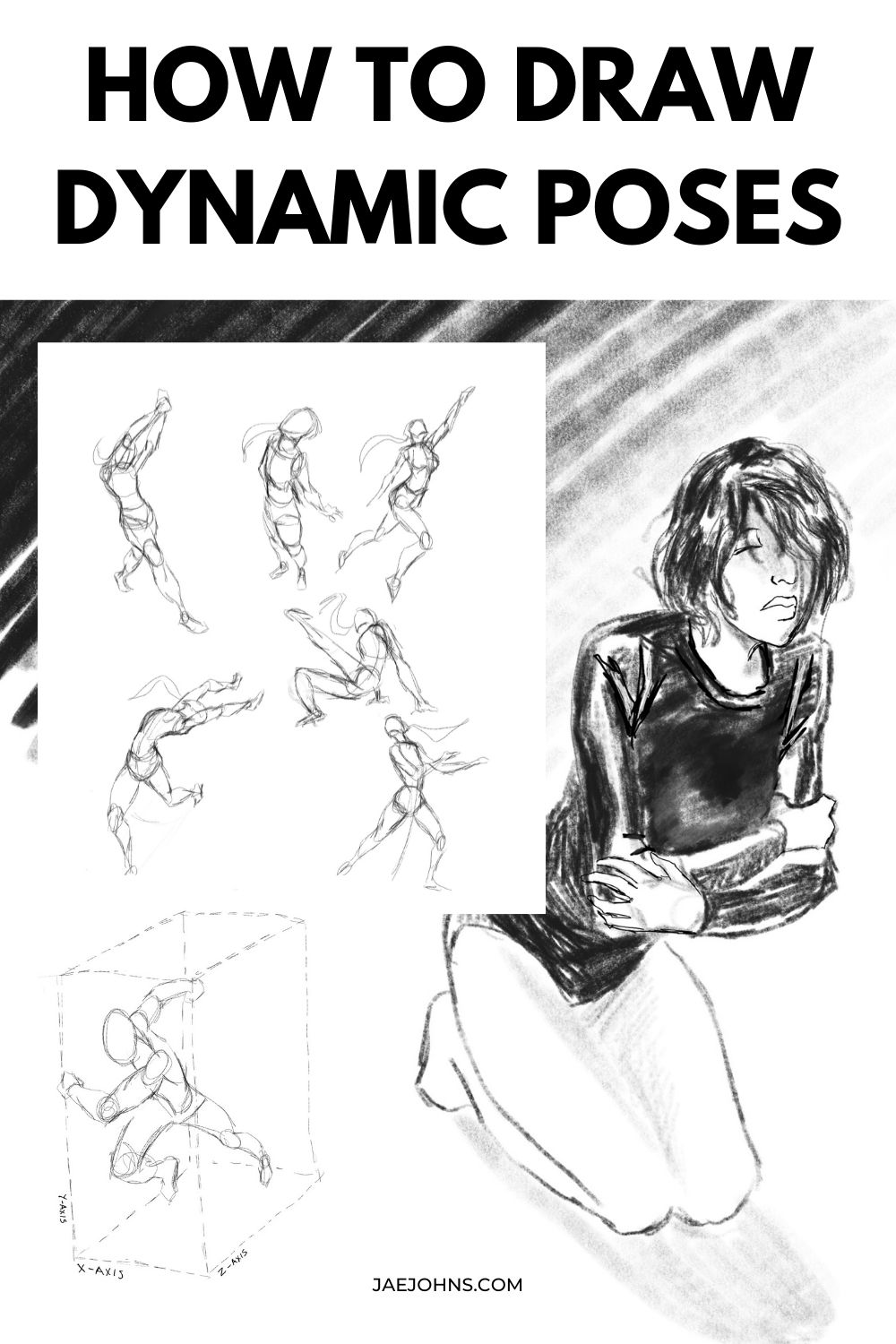
Pay Attention to Anatomy When Drawing Poses
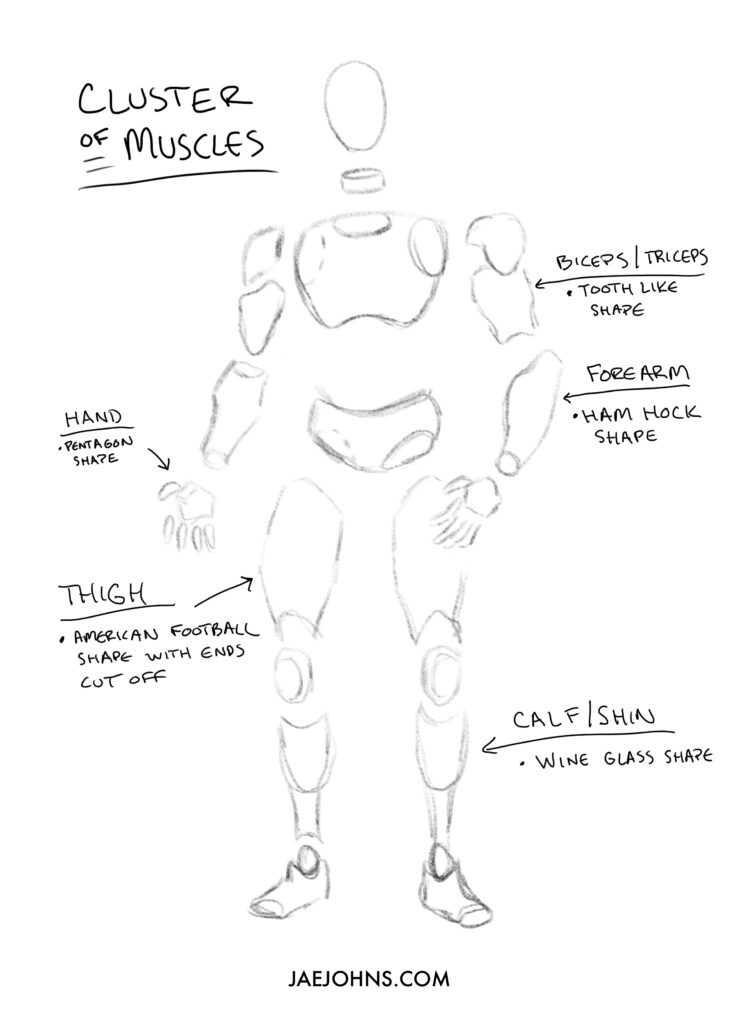
It would be best to focus on anatomy as it is the key to realistic and dynamic drawings. Anatomy enables you to understand the muscle coordination of a figure.
With adequate knowledge of anatomy, you can add life to your characters. Moreover, understanding the movements of the body helps you to draw without references.
You do not have to go in-depth when studying anatomy.
It's more important to know the cluster of muscles.
Understand shapes of the cluster of muscles when they are flexed or relaxed, expand, and contract.
I've included a chart of the cluster of muscles above.
In addition to muscles, practice getting the right proportions to give your figures a dynamic and three-dimensional appearance.
If you only focus on adding muscles, your characters might end up looking like they have no skin.
Keep reading to learn how to draw action poses with anatomy.
Read Also:
- Top 10 Tips to Drawing Backgrounds Like a Pro
- Top 10 Free Drawing Books
- 81 Sketchbook Ideas to Make Your Drawings Interesting
Gather Action Pose References
Before starting to practice, gather many references. Do not feel bad about it. Using source images is completely fine as a beginner.
However, especially when you struggle with drawing poses, you will find yourself frustrated and annoyed.
A dynamic pose reference can help you throughout your journey towards perfection.
There is no problem in copying when you are learning and have zero experience.
Even professional artists do this sometimes.
You can find the best references on Pinterest or Quickposes. Or you can take your camera outside and click photographs of people as reference images.
Bring Life to Your Art Poses: Step-By-Step Guide
Do your characters appear to be motionless and unrealistic?
Well, most artists struggle with that. At some point, you may have been annoyed and decide to quit.
Drawing character poses are not as challenging as you think it is.
All you need is to modify how you draw and understand some techniques for drawing successful body poses.
Here is a complete art guide on how to draw an action pose more effortlessly:
Observe and Understand the Figure
Observation is the key to a thriving art career. Analyze the reference image to understand the anatomy of the body.
If you keenly observe your body's motion, you will see that the human body functions and moves as a single unit.
For this, stand in front of the mirror.
For example, when you lift your arm, you will notice that many other parts of your body also adjust with the motion. This will help you when you start drawing a particular pose.
For instance, you want to draw a character that is punching on the right side.
Therefore, do not only pay attention to the movement of the arm and the fist.
But adapt his whole body with the punching motion to make it more dynamic. In this case, you should bend the torso and face in the direction of the action.
Moreover, the body's weight is transferred more to the foot in the front than the one at the back.
Don't forget Gravity for Rhythm
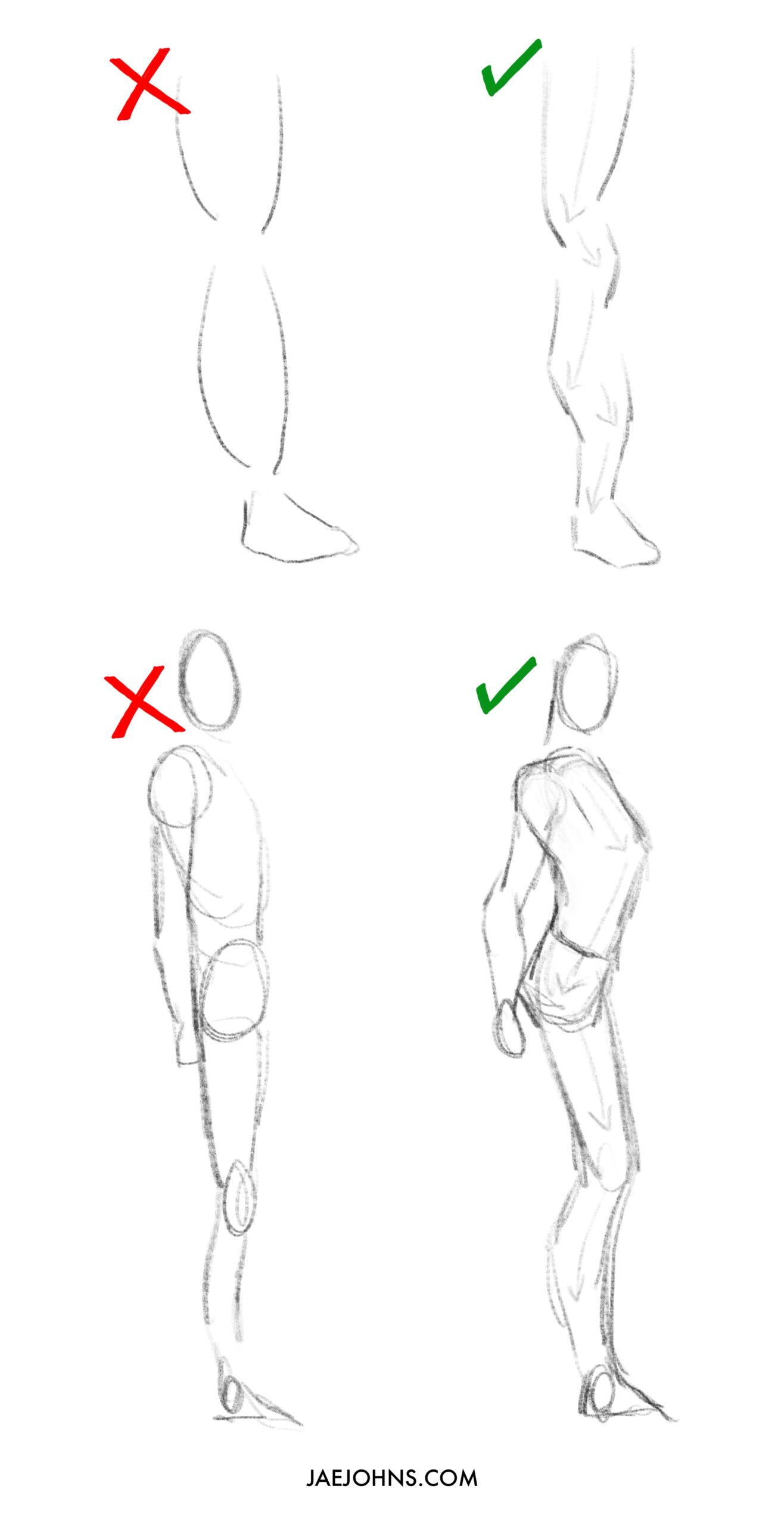
Gravity is what makes your characters stick to the ground unless they are just floating in the air.
Focusing on the gravitational pull will help you achieve a more dynamic pose.
Your drawing should consist of interconnecting curves to depict gravity.
Let's take the example of drawing a leg only. If you draw it with standard curves, you will notice that the gravitational force starts and ends at one point.
The drawing also appears to be unpleasant.
Instead of filling your drawing with parallel curves, draw the first curve and then the other below and opposite to it.
Hence you will be able to distribute the force evenly.
This is because the force starts from one angle and is reflected in the other, and continues down to the ground.
Dramatic poses have a rhythm that is set when different forces interact.
For example, if your character is pushed to the left side, it will fall unless he opposes the force with his strength.
Rhythm and gravity help an artist to balance the pose and weight of the figure.
Lines of Action
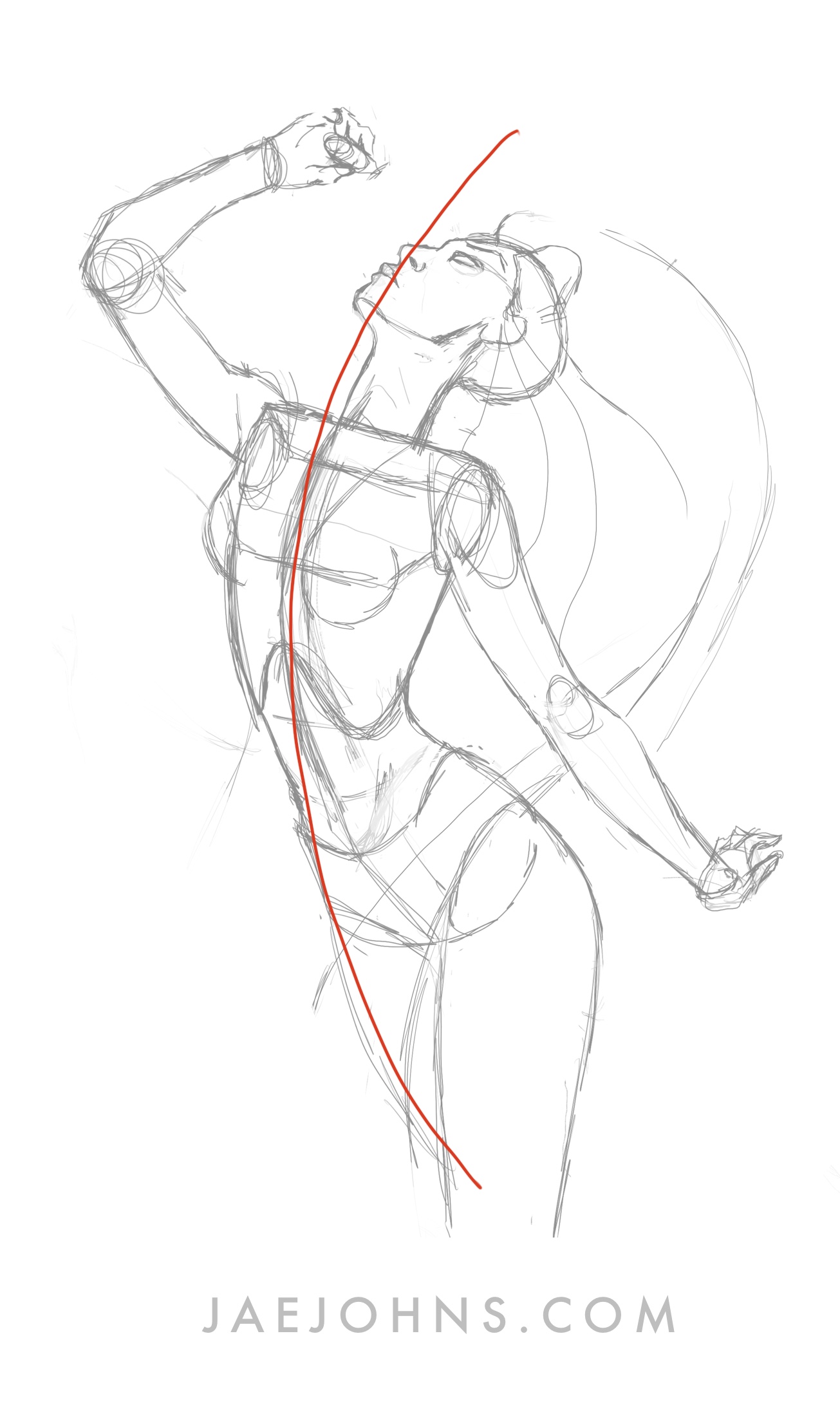
Lines of action depict the motion of your figures. These are imaginary lines to help you get the proper movement.
For example, in a dynamic pose, an action line looks more like an S or C.
But the hands and the limbs may follow the same direction or seem to be opposing the line of action.
If your character is in a relaxed pose, there is usually only one line of action.
But in dynamic poses, you will need to sketch out more lines before drawing.
For instance, if your character is playing with a bat, you can draw three action lines:
- The first one shows the direction of the bat.
- The second line depicts the body motion of the character.
- And the last one represents the direction of the ball opposite to the bat.
Avoid exaggerating the number of active lines because it may create a mess and confuse the intention of the dynamic pose you are trying to portray.
Begin With Simplicity
As a beginner, you should start with simplicity. Instead of focusing on the details and other features, practice the poses only.
Mark your lines of action according to the motion you want to express.
For example, use different shapes like ovals, rectangles, or even triangles to draw various body parts.
For instance, for the torso, draw one big oval for the chest and a smaller one to represent the pelvis. Then, connect the parts with curves.
Similarly, for legs and arms, sketch smaller shapes and connect them with straight and curved lines.
Construction
The next step to focus on when drawing a complete character is the construction.
It is a series of sketching the reference lines and adding the anatomy and elements to bring the figure to life.
The construction can be divided into three significant steps:
Skeleton of the Figure

The first thing to start with is the skeleton. This is pretty simple but also very crucial.
If you get it wrong, then your character's pose will lose its essence.
- When drawing the face, you can make a bean-like shape with a horizontal line for the location of the eyes and a vertical line for the nose.
- For the body, sketch out the action lines that will portray the motion.
- An easy way to draw human poses with the torso is to mark two points, say A and B. Point A represents the center of mass of the chest, and point B is where the center of mass of the pelvis will be.
- Connect the two points, and the distance between them should be the furthest without disturbing the structure. Changing the position of the line AB will expose you to various poses.
- Next, add the lines that indicate the direction of limbs and arms.
Add More Dynamics to Poses Using the Axes Rule
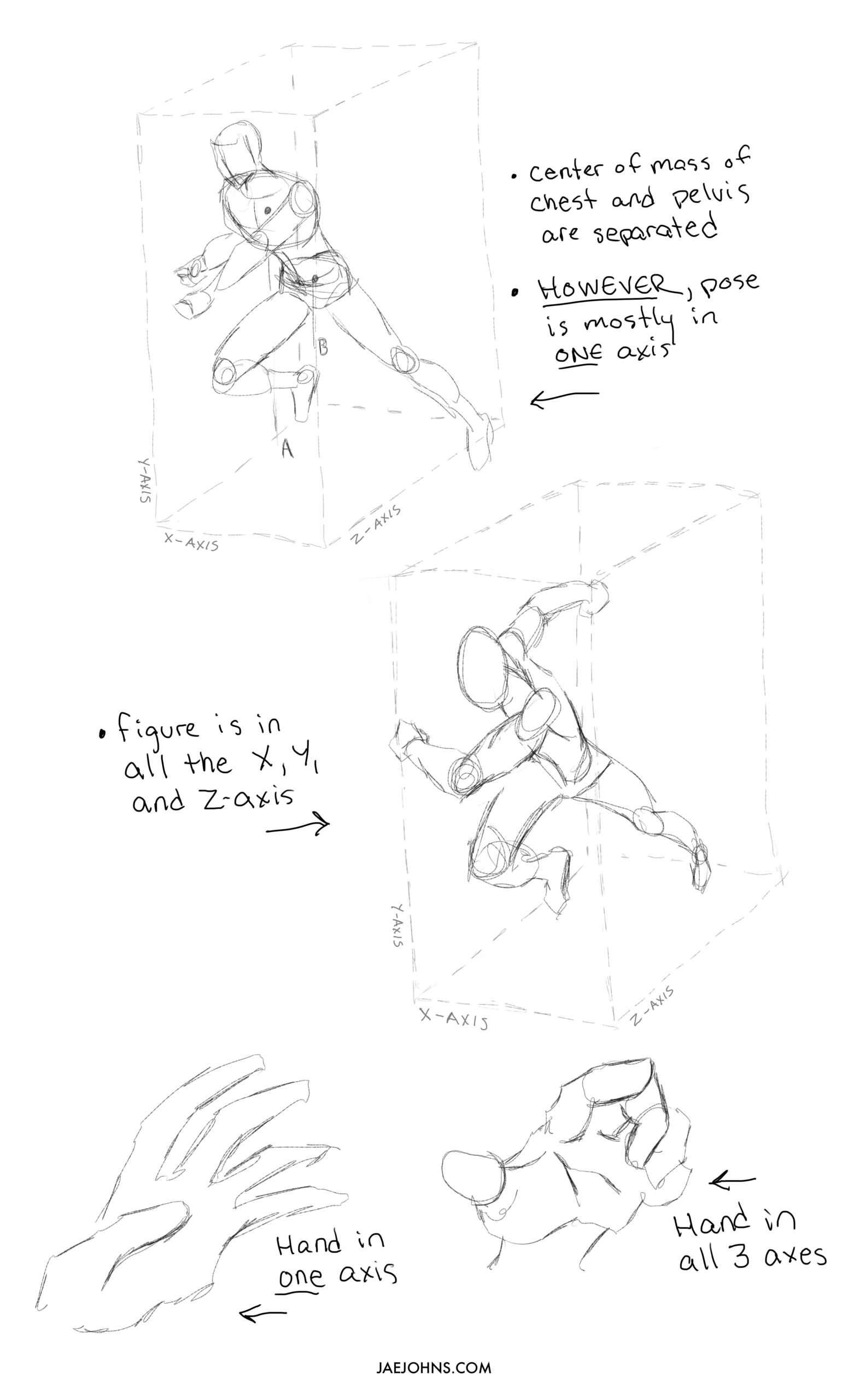
When we think of the body in the 3 axes, x-axis, y-axis, z-axis, we can add more twists and movements to the body and help make our pose more dynamic.
After separating the center of mass of the upper torso and pelvis to its furthest, which is discussed above, draw the different parts of the body in the 3 different axes.
An easy way to master this step is to follow the Axes Rule.
Axes are lines that pass through each body part.
It helps the artist to get the right proportions. An image can be divided into horizontal (x-axis) and vertical (y-axis) axes as in the first step.
● Divide the whole reference image into vertical and horizontal axes.
● If the figure is reclining, draw diagonal lines following the shape.
● If you want to make your character more 3D and real, focus on the z-axis. For instance, your character appears to be punching the viewer. Dividing their body into x and y, and z axes will indicate the arm extended out to punch.
● Your drawing process becomes more manageable with the axes formula. With the axes, you will know where to start and end. By the end of the construction, you will get the exact dynamic pose as in the reference.
The rule is especially helpful if you're drawing dynamic anime poses. Since anime body poses are known to be extreme, using the Axes rule will help you push your anime action poses to an extreme that works.
Anatomy of the Figure
The following important part of your figure's construction is anatomy. As discussed before, having sound knowledge of anatomy is essential.
Start adding the muscles and curves to your character. You can describe this step as "Putting the meat on the bone."
While adding the bends, keep the concept of gravity in your mind for a rhythm and draw dynamic poses.
Detailing and Refining Your Character
Once you are satisfied with the pose of your character, it is time to add details. First, outline your figure with a darker pencil or whatever you prefer.
Next, sketch the facial expressions, hair, costumes, props, and other minor details. Finally, erase the previous guidelines for a perfect finish.
Foreshortening
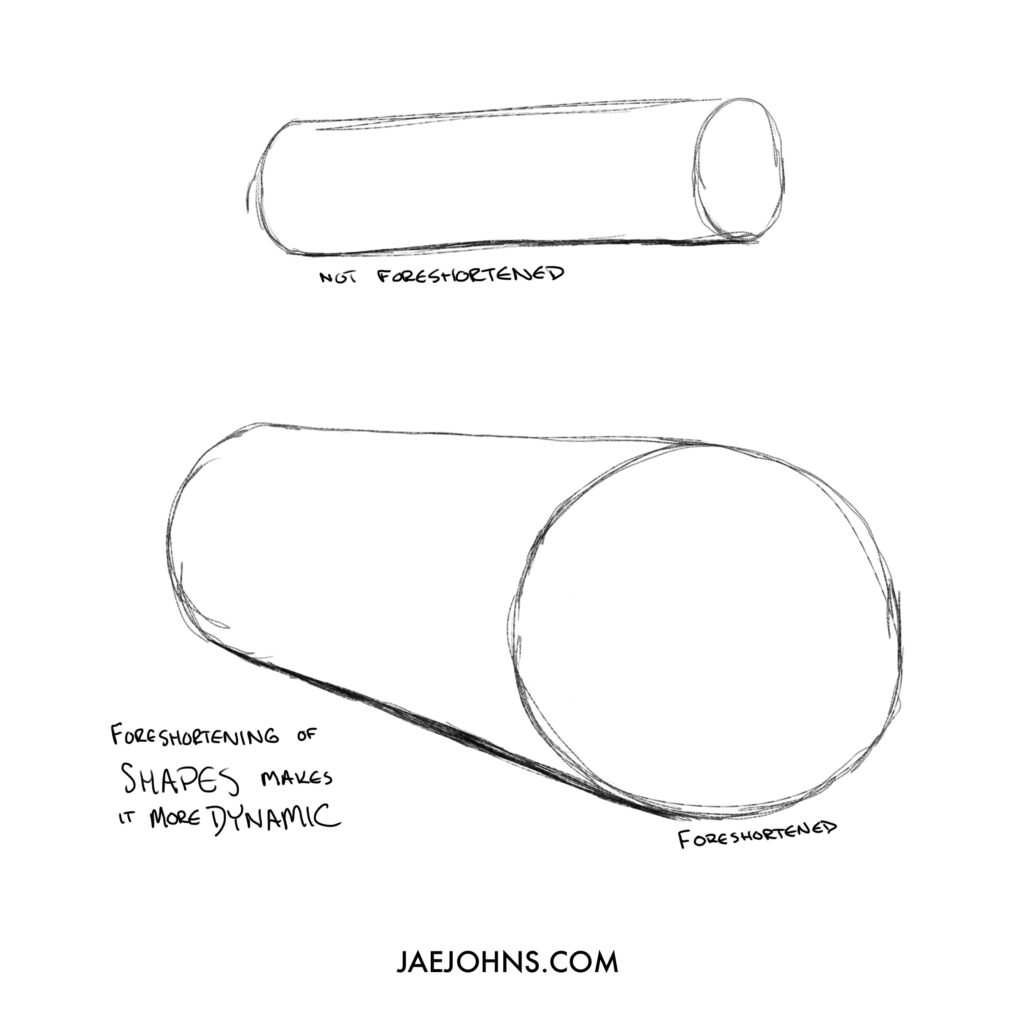
Foreshortening is the core of a dynamic pose. And if you are not familiar with it, then here is what it means:
To portray something which seems to be closer to the viewer with less depth and more 3D perspective.
Let's take an example of a cylinder to understand the concept of foreshortening. If you draw a cylinder's side, there is no foreshortening, and it does not feel dynamic.
On the flip side, making the front side that is the circular part of the cylinder, has a lot of foreshortening effect. But this also does not create the perfect motion.
So how do you attain the perfect dynamic look? It is all about understanding the perspective that most artists struggle with.
Draw the cylinder in a three-quarter perspective by showing the front and the side both.
This gives it a realistic appearance. To make it appear as it is flying towards us with intensity, make the front part bigger.
That is the key to an ideal foreshortening. You make the front part of the moving character more significant than the back. Now let's apply the same technique to a punching arm.
Drawing the arm straight with a fist on one side depicts no motion. But if you add a foreshortening effect, the punch will appear more dynamic to the viewer.
Like the previous case of a cylinder, the drawing becomes flatter and less intense if you foreshorten the fist more.
Applying the same art of perspective to a character can make it look more dramatic.
For instance, you are drawing a character that seems to be flying towards the viewer.
Keep the head and the upper body part more extensive than the legs.
This technique of foreshortening turns your 2D figures into 3D ones and helps to draw dynamic poses.
How to Improve in Drawing Dynamic Poses?
You cannot become a pro overnight by merely learning the basics of art poses.
It will take time to boost your skills. While thinking about improving in drawing body poses, the first thing that hits your mind is practice.
Yes, practice will make you master this skill.
But how to practice correctly to achieve your goal. Here are five tips and methods to practice more effectively:
Thumbnail Sketching

Thumbnail sketches are merely rough ideas that artists use before drawing the actual figure. Nevertheless, it is a great way to practice dynamic poses.
Select one character and draw it with various poses on the same paper.
They should not have to be perfect and refined. But, on the other hand, do not spend too long on one particular posture.
Once you have drawn four to five various versions of the same character, you may find the one that you think is the best.
Focus on it and apply the construction format to it that has been mentioned already in this article.
Don't Just Copy!
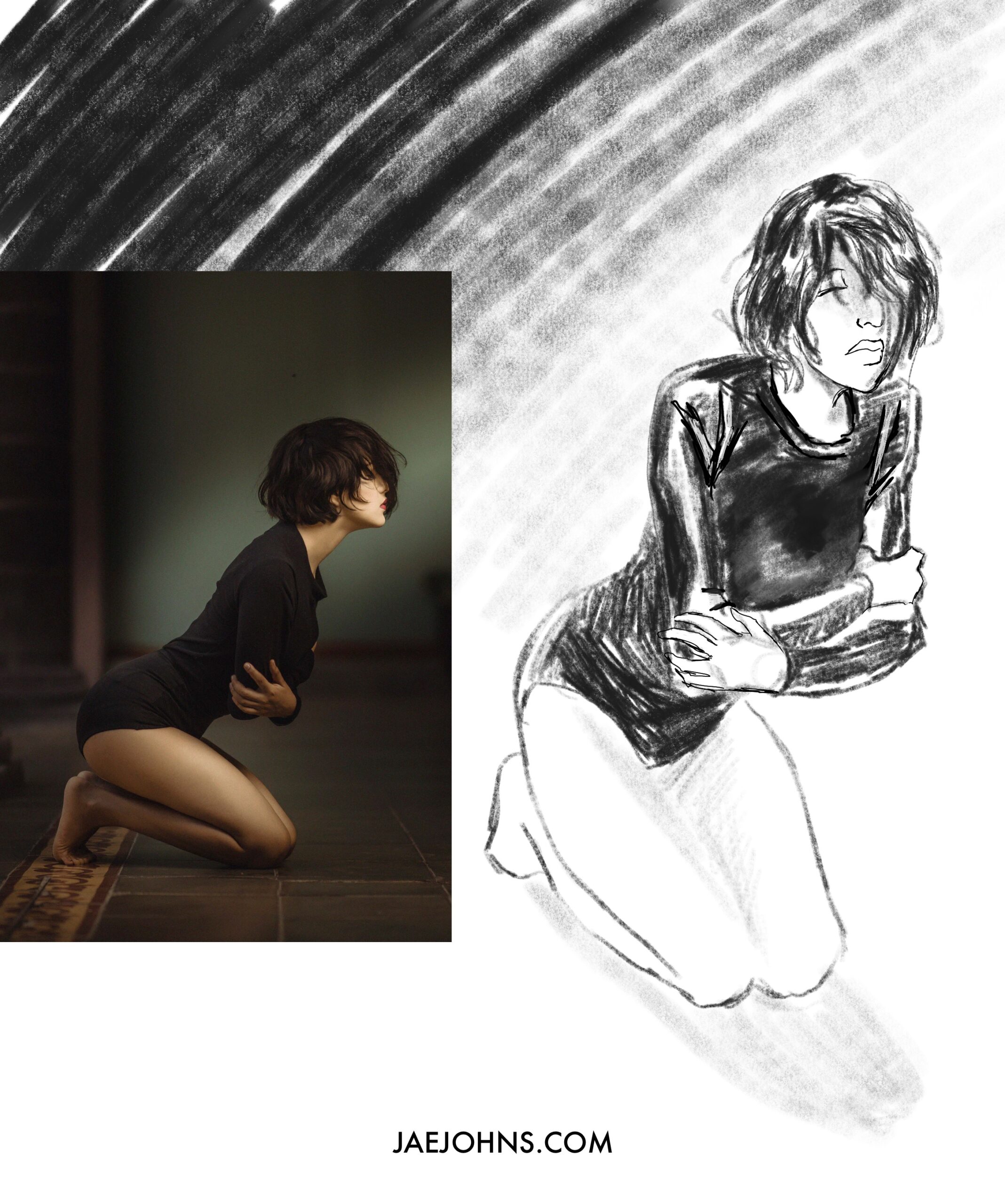
Do not bound yourself to get the replica of your action pose reference image. Instead, play around by adding variations to your character.
For example, you can try changing facial expressions and features, adding different costumes and props, drawing different hairstyles, etc. In this way, you allow yourself to be more creative and imaginative.
Observe and Draw from Life
Practice is not the only important factor to consider to improve as an artist. The second key element is observation.
It enables you to create more authentic artworks. So get a pocket sketchbook and go outside to observe people.
You can go to a park and draw the people you see. You will discover many dynamic poses. Real-life observation gives you more exposure than references do.
This is probably the best way to achieve perfection as an artist.
Practice Gesture Drawing
Observation is not merely seeing things but understanding, too, especially when the action is instantaneous. Gesture drawing is another way to enhance your observation skills.
Gesture drawing depicts the movement and poses of a model. Primarily, the artists draw the series of actions taken by a person quickly, ranging from 10 seconds to a maximum of 5 minutes.
It is not about copying the whole model but drawing the lines and curves to portray the dynamic poses.
First, observe the complete action and then sketch it on your paper. Of course, for gesture drawing, you have to be quick, but that does not mean to become reckless.
Relax and Slow Down
Last but not least: lower your expectations! Becoming a pro in drawing dynamic poses is possible but requires time and patience.
You have to slow down and relax. You will feel frustrated and not happy with a particular pose at many points because it did not turn out as you wanted it to be.
Just start again. Enjoy your art journey and keep experimenting with new dynamic standing poses or other cool poses to draw. And with patience, you will find yourself skilled in no time.
Conclusion
Whichever style you look to draw in, whether is realistic, cartoony or anime this guide will help you draw more cool character poses.
It doesn't matter if you're trying to draw chibi action poses, a dynamic standing pose, or stuck on what poses to draw.
It's okay if you don't remember all these tips. Feel free to come back to this guide and look at the reference images to help you draw better action poses.
How To Make Dynamic Poses
Source: https://jaejohns.com/dynamic-poses/
Posted by: mcdougalthilbod.blogspot.com

0 Response to "How To Make Dynamic Poses"
Post a Comment